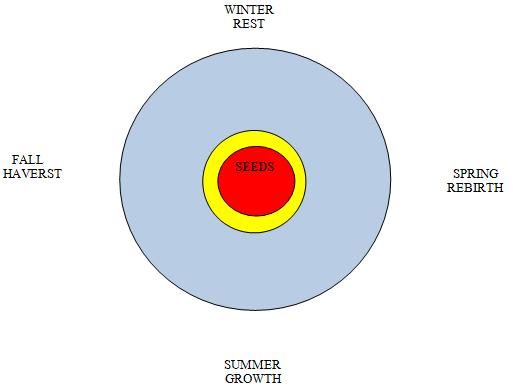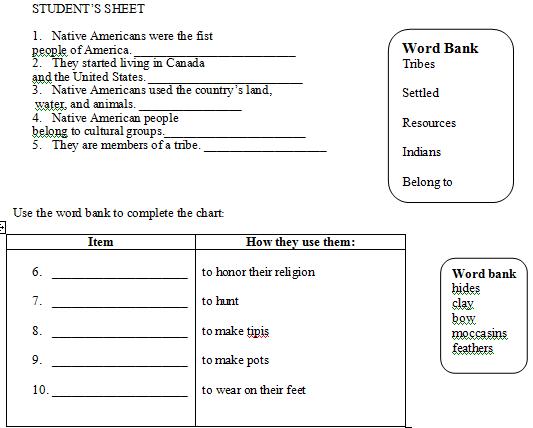SKILLS COVERED: Speaking, Vocabulary, Listening.
GENERAL GOALS:
- Getting a thorough look and a better understanding on the diversity of American society
- Make students interested in American Indian history.
SPECIFIC OBJECTIVES:
- - Obtain the historical data about the Hopi Indians, the Kwakiutl, The Abenaki , the American Indian tribes.
MATERIALS/VISUAL AIDS: Student’s Worksheets, Screen and Multimedia projector or a Smartboard, high-speed Internet access
Pre-task: it is highly recommended to read the article about N.C. Wyeth “Cover Illustration for The Last of the Mohicans” in Picturing America Teachers Resource Book.
Please answer the questions about the artwork we see now.
- Can you describe the character’s clothing?
He wears a rough cloth or animal skin, a leather strap across his chest, a thin belt holding his knife and tomahawk, an arm band, a feather in his hair.
- How does the clothing tell who the character is?
(In the early 1900s, this was how most Americans thought American Indians might have dressed. The weapons suggest that he is a warrior without a gun)
- Please describe the landscape shown in the artwork.
Exercise 1. Listening and discussion.
Start your lesson with watching a 5.50-minute film Apache Indian Resistance about what American Indians had to face during White American invasion.
YouTube Link: http://www.youtube.com/watch?v=MRQb7zOeYWk
Pre-intermediate students will need teacher’s comment.
Exercise 2. Vocabulary
Use the Word Bank to write the word that has the same meaning as the underlined words.
See the Students Sheet.
Exercise 3. Speaking component
Now please divide the class into 3 groups and make them review the background information on featured native groups using the students sheets. Study the information thoroughly and do the Research Project given below. Students have 25 minutes to study the information in the text given and answer the questions given in the Student’s Sheet. They answer the questions in pairs.
GROUP #1
Hopi Indians (pronounced HOH pee) are one of the Pueblo Indian tribes. According to the 1990 United States census, there are about 11,000 Hopi. About 7,000 live on the Hopi reservation in Arizona. They live in 11 villages on or near three high mesas (tablelands). One village, Oraibi, is one of the oldest continuously inhabited villages in the United States. It was founded about 800 years ago.
Like their early ancestors, many Hopi grow crops on plots of valley land. Some Hopi earn additional income by making and selling baskets, pottery, silver jewelry and kachina dolls. The carved wooden dolls represent messengers sent by the gods. Religious ceremonies play an important part in the life of the Hopi. At certain times of the year, Hopi men dress as kachinas and perform dances in the village square or in underground structures called kivas.
The Hopi Reservation is located in the high deserts of northeastern Arizona. The total land area is almost 2.5 million acres and the elevation ranges between 4,700 feet in the valley floors to 7,800 feet atop the northern reaches of the mesas. Temperatures range from an average daily maximum of 87°F in summer to an average daily minimum of 18°F in winter. The precipitation averages from 6 to 10 inches per year in lower elevations to 10 to 14 inches per year in higher elevations. About half of the annual precipitation comes from summer rains and the other half from winter snowfall. While natural springs abound across the landscape, there are no year-round rivers or streams and washes contain flowing water only after rains. Grassland and desert scrub dominate the lower elevations while pinyon and juniper woodlands cover the mesa tops.
More information about the Hopi:
See the website http://www.hopi.nsn.us/
(GROUP #2)
Kwakiutl
Members of the Kwakwaka'wakw (pronounced kwah kwah kyuh WAH kwah), a group of loosely connected Native American tribes living along the northwestern coast of British Columbia just north of Washington State, were dubbed Kwakiutl (pronounced kwah kee OO tuhl) by Europeans who first encountered them late in the 18th century.
The Kwakiutl crafted intricately decorated houses and canoes. Theirs was a highly organized society in which inheritance and personal property were important in determining status. The potlach ceremony, in which gifts were exchanged and property was sometimes burned or thrown into the sea, was an important public demonstration of wealth and status. Status was signified by totem poles placed in front of the home.
Traditionally, Kwakiutl men fished and hunted, while the woman gathered. After encountering Europeans, Kwakiutl became fur traders, commercial fishermen and cannery workers. Though they adapted well to these economic changes, the Kwakiutl were greatly affected by European diseases.
According to the E-Museum at the Minnesota State University, which may be accessed through the EDSITEment-reviewed Internet Public Library: "The Kwakiutl population recovered after World War II (1939-1945), growing to more than 4,100 in 1991. Since the 1970s, traditional Kwakiutl culture has also experienced a dramatic revival."
More information about the Kwakiutl:
University of Washington Libraries: Digital Collections, available through the EDSITEment resource American Memory, including background information and photos of totem poles.
GROUP #3
Abenaki
The Abenaki, of the Algonquian group of Eastern Woodland Groups, lived in an area extending across northern New England into the southern part of the Canadian Maritimes. Their lifestyle was similar to that of other Eastern Woodland groups. Living in the northern range of the Algonquians, the Abenaki may have depended more on hunting and fishing than groups living in a more temperate climate. But they did grow corn, beans, squash and other crops.
More information about the Abenaki: http://content.lib.washington.edu/aipnw/wright.html
STUDENT’S SHEET
Broaden your understanding of the relationship between native people and their natural environment by researching another American Indian tribe or group and answering the questions below.
What is the name of the native tribe or group?
What is their native language?
Where do they live?
In what type of natural environment do they live (forest, wetland, desert, meadow, etc.)?
What is the climate like?
What do they believe are the benefits and challenges of their natural environment?
In what ways have they adapted to the environment?
What type of sustaining crops, products, and food do they depend on?
What types of traditions, cultural ceremonies, and celebrations do they have that relate to their cycle of life and their environment?
Home assignment:
CRITICAL-THINKING ACTIVITIES
- Using the information you’ve already learnt, complete the diagram below to show your understanding of the American Indian people’s cycle of life. In the outer circle, fill in the agricultural and ceremonial information that corresponds to the time of the year or season. The first one has been done for you. Use another sheet of paper if needed.
-
In your own words, explain the reciprocal relationship between the American Indian tribe and their environment as it shown by your completed diagram.


References:
|

